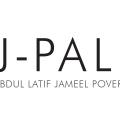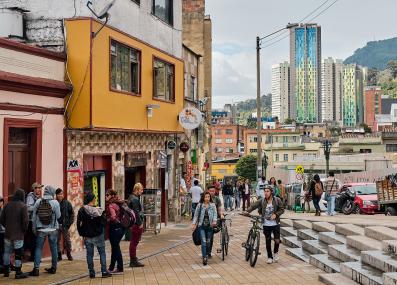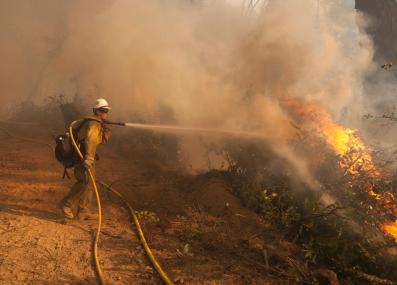New to Climate Change?
Air Pollution
Air pollution is one of the largest threats to human health worldwide, leading to millions of early deaths every year. This air pollution is not the same as the greenhouse gas emissions that are driving climate change—but it does come from many of the same sources, such as burning fossil fuels for energy, heat, and to power vehicles. By choosing less polluting technologies and behaviors, we have opportunities to address both problems at once.
The toll of air pollution
Many common pollutants threaten our health when we breathe them in, including ozone, carbon monoxide, nitrogen dioxide and sulfur dioxide. The most dangerous type of air pollution is “particulate matter,” or small solid particles floating in the air. These particles damage our lungs and contribute to heart disease, lung disease and cancer.1
The World Health Organization estimates that air pollution contributes to 1 in every 8 deaths worldwide: around 7 million early deaths a year.2 This pollution also hurts the global economy, through health costs on affected individuals, their families, and public health systems, and by decreasing overall productivity.
Air pollution also hurts our ability to think and learn. Studies of children and schools have found that air pollution contributes to learning disabilities, behavioral incidents, and lower test scores.3
Who suffers from air pollution?
The short answer is almost everybody: the World Health Organization estimates that 99% of people worldwide breathe unhealthy amounts of air pollution.4
But exposure varies quite a lot. In general, air pollution is most severe in fast-industrializing low- and middle-income countries, and in and around very dense cities. Major cities in India and China are particular hot spots for air pollution.5 Another major risk factor is relying on indoor coal, kerosene or wood stoves for cooking and heating, which is especially common in rural areas of low- and middle-income countries where there are few alternatives.6
Air pollution also tends to fall hardest on low-income neighborhoods, which are more likely to sit near sources of pollution like highways, power plants, factories and waste sites.7 And among those exposed to air pollution, children, pregnant women and the elderly are the most likely to be severely affected.8
Air pollution and climate change
Some air pollutants are also climate pollutants—including methane and black carbon, a type of particulate matter that warms the planet by absorbing energy from the sun.
Climate change also causes more and larger wildfires, which spread air pollution in the form of huge clouds of smoke. In the U.S., wildfires in September 2020 led to the Pacific Coast briefly being home to 77 of the world’s 100 most air-polluted cities.9
The strongest connection between climate and air pollution, however, is that most human actions that contribute to climate change also create air pollutants. We release particulate matter every time we burn fuels such as coal, oil or gas, as well as forests, trash, and agricultural waste. Fertilizers and animal waste, both contributors to climate change, also release the air pollutant ammonia. This means that most of our actions to prevent future climate change—like powering our home heating, cars, and electric grid with low-carbon electricity instead of fossil fuels—also offer immediate relief from air pollution.
The health and economic benefits of this relief are immense. Some experts have estimated that aggressive action to slow climate change would more than pay for itself simply by lowering air pollution, such as in the U.S.10 and China.11
Policy solutions
Beyond general climate action, there are specific steps we can take to protect ourselves from air pollution.
High-income countries have made great strides in lowering air pollution by requiring pollution control technologies in factories, power plants and vehicles. Middle-income countries like China and India, which have experienced fast industrial growth and mounting air pollution, have recently enacted similar regulations.12
Despite these regulations, reliable enforcement is a challenge worldwide—in the U.S. alone, high levels of particulate matter affect over 100 million people.13 Some policies can help with enforcement, like using independent auditors14 and providing real-time emissions data to environmental inspectors, which is currently being tested for its impact on air pollution and health outcomes.12
There are also market solutions. The city of Surat in India recently launched the world’s first cap-and-trade market for particulate matter, in which the government provides pollution "allowances" to businesses that they can trade. A study of this market found that it reduced plant pollution by 20–30% at a lower cost to the plants than typical regulations.15
And technology can help protect people from some of the worst harms of air pollution. Governments or citizens can use HEPA (high-efficiency particulate absorbing) filters to take particulate matter out of the air as it circulates indoors; a study in Colombia is evaluating whether HEPA filters in classrooms enhance student learning.16 Governments can also subsidize clean cooking fuels or connect homes to the electrical grid in places where many people cook with wood, kerosene and coal stoves, a major source of indoor air pollution.17
Published March 23, 2022.
1 Centers for Disease Control and Prevention: Particle Pollution.
2 World Health Organization: Air pollution. Other estimates range from 6.5 million deaths a year (Fuller, Richard, et al., “Pollution and health: A progress update,” The Lancet Planetary Health, June 2022), to almost 9 million deaths a year (Lelieveld, Johannes, et al., “Effects of fossil fuel and total anthropogenic emission removal on public health and climate,” Proceedings of the National Academy of Sciences, 2019), to almost 9 million from air pollution caused by fossil fuel burning alone—or around 1 in 5 deaths worldwide (Vohra, Karn, et al., “Global mortality from outdoor fine particle pollution generated by fossil fuel combustion: Results from GEOS-Chem,” Environmental Research, April 2021).
3 See for instance: Xu, Xiaohui, Sandie Uyen Ha, and Rakshya Basnet, “A Review of Epidemiological Research on Adverse Neurological Effects of Exposure to Ambient Air Pollution,” Frontiers in Public Health, Vol. 4, August 2016, doi:10.3389/fpubh.2016.00157; Gilraine, Michael, and Angela Zheng, “Air Pollution and Student Performance in the U.S.,” National Bureau of Economic Research, Working Paper 30061, May 2022, doi:10.3386/w30061; Margolis, Amy, et al., “Prenatal exposure to air pollution is associated with childhood inhibitory control and adolescent academic achievement,” Environmental Research, Vol. 202, November 2021, doi:10.1016/j.envres.2021.111570.
4 World Health Organization: Air Pollution.
5 IQAir: 2021 World Air Quality Report.
6 World Health Organization: Household Air Pollution.
7 Hajat, Anjum, Charlene Hsia, and Marie O’Neill, “Socioeconomic Disparities and Air Pollution Exposure: a Global Review,” Current Environmental Health Reports, Vol. 2, September 2015, doi:10.1007/s40572-015-0069-5.
8 U.S. Environmental Protection Agency: Research on Health Effects from Air Pollution.
9 IQAir: 2020 World Air Quality Report.
10 Drew Shindell, Nicholas School of the Environment, Duke University. “Health and Economic Benefits of a 2°C Climate Policy.” Testimony to the House Committee on Oversight and Reform Hearing on ‘The Devastating Impacts of Climate Change on Health,’ August 5, 2020.
11 Li, Mingwei, et al. “Air quality co-benefits of carbon pricing in China.” Nature Climate Change, Vol. 8, 2018, doi:10.1038/s41558-018-0139-4
12 Almond, Douglas and Shuang Zhang. "Improved Environmental Inspections in China and Their Effects." Ongoing. Abdul Latif Jameel Poverty Action Lab (J-PAL).
13 U.S. Environmental Protection Agency: “National Air Quality: Status and Trends of Key Air Pollutants.” National Summary 2021.
14 Duflo, Esther, Michael Grenstone, Rohini Pande, and Nicholas Ryan. "Truth-Telling by Third-Party Auditors and the Response of Polluting Firms: Experimental Evidence from India." The Quarterly Journal of Economics, Vol. 128, Issue 4, November 2013, doi:10.1093/qje/qjt024. Duflo, Esther, Michael Greenstone, Rohini Pande, and Nicholas Ryan. 2013. "What Does Reputation Buy? Differentiation in a Market for Third-Party Auditors." American Economic Review, Vol. 103, No. 3, May 2013, doi:10.1257/aer.103.3.314.
15 Greenstone, Michael, et al. “The Benefits and Costs of Emissions Trading: Experimental Evidence from a New Market for Industrial Particulate Emissions.” Conference Paper, National Bureau of Economic Research, July 15, 2022.
16 Romero, Mauricio, Michael Kremer, and Santiago Saavedra. “Air Filters and Students Learning.” Ongoing. J-PAL King Climate Action Initiative-funded study.
17 Abdul Latif Jameel Poverty Action Lab (J-PAL). "Biomass cookstoves to reduce indoor air pollution and fuel use," J-PAL Policy Insights. Last modified October 2020. doi:10.31485/pi.2265.2020.










